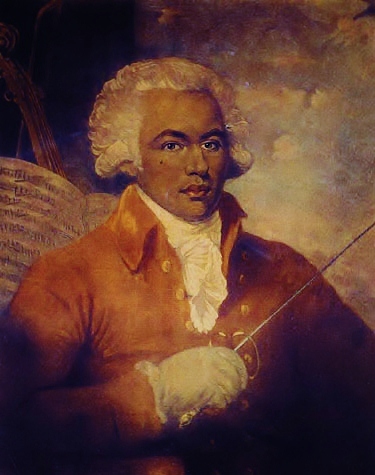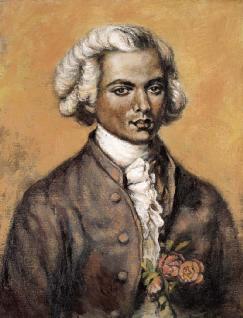Thought I'd do a brief history lesson on the royal figures of modern Ethiopia using pics. Edited and revised edition. 
Emperor Tewodros II
His childhood name was Kassa Hailu, he came up during a period of Ethiopian history known as the "Age of Princes" where the power and prestige of the Emperor was eclipsed by the power and influence of various warlords and princes. Each tribe and region had someone they wanted in charge, so the Negus basically became a puppet for whoever had the best army and weapons in order to gain influence over rival kingdoms. Kassa Hailu began his career a "shifta" which is an Ethiopian term for "outlaw" in more contemporary terms it could range from thugs and bandits to rebels and revolutionaries, so these "shiftas" travelled and raided other kingdoms and tribes. Before long, this band of outlaws became an army and from there Kassa consolidated power and outgunned the warlords reigning in control from the rebellious kingdoms of the fractured Ethiopian Empire. In order to keep rebellious Shewans in line he took the prince of their kingdom Sahle Maryam prisoner. Sahle would grow up to become the future Menelik II.
And so Kassa Hailu was finally crowned Emperor Tewodros II and this marked a turning point between the end of the Age of Princes and the beginning of modern Ethiopia. Despite his crowning, many saw Tewodros as a royal surpur although he claimed nobility through his mother. The Emperor believed in advancement, he was much too busy quelling rebellions in the still fragile empire. After the death of his beloved wife he became increasingly brutal. After a British captain failed to secure him help against the Muslims threats to the north he took the Europeans in the kingdom who so happened to also be Brits. His army was soundly defeated, so the Emperor freed the hostages and sent them to the Brits, the Brits respond by saying they'll treat him and his fam with dignity. The Emperor angrily responded he would never surrender, so his fortress stronghold at Maqalla was shelled and using the pistol that brought him fame as a shifta committed suicide on Easter Monday. (Below are pics of him, his captives, and the tragically ironic Ras Alemayhu his son who ended up living in Europe after his father's death. The last pic is a European descendant of very royal blood that was a British actor.)

.jpg)


Emperor Tekle Giyorgis II of Wag
After the fall of Emperor Tewodros II, 3 powerful princes remained from the long time struggle that was the "Age of Princes". One was Kassi Mercha of Tigray, another was Sahle Maryam of Shewa, and the third was Wagshum Gobeze of Wag. Through his mother he had ties to the Solomonic dynasty, but more interestingly though through his father he had ties to the more mysterious medieval Zagwe dynasty and the rulers of Lasta. When the Jewish Queen Judith(or Gudit, which means trouble) destroyed the remnants of the Axumite Empire, the Solomonic dynasty was forced to the south, the upstart Zagwe dynasty then filled the void. Zagwe was a Ge'ez name for the Agaw tribe who are the indigenous inhabitants of the Ethiopian highlands. Agaws were also close with Beta Israel a.k.a. Ethiopian Jews whom were marginalized by the Axumites and later Solomonic lines. The Zagwe dynasty included King Lalibela who built the famous rock hewn churches in the town that bears his name. The nearly 400 year Zagwe reign ended with the return of a Solomonic descendant of Axum and his army. So this Zagwean comeback began with Wagshum's leading the rebellion of Lasta 6 years after the execution of his father by Tewodros II.
In the Emperors final months, Wagshum began marching his army to Tewodros' stronghold the fortress of Maqalla. After a brief detour to eliminate a rebellious rival, and with the Emperor now dead, Wagshum now proclaimed himself Emperor Tekle Giyorgis II at Soqota in his home of Wag. However with no bishop to crown him, his legitimacy was quickly questioned. To close that gap he showed favor to the church and reversed decisions made by Tewodros before him. After diplomatic olive branches to his rivals didn't work, he arranged to have his have brother marry the first cousin of King Menelik II. While Tekle Giyorgis himself was already married to the sister of his Tigrean rival Kassai Mercha. None of this worked, and while Mercha re-gained access to the sea and British support to train/arm his troops, Menelik built up slowly while he let his rivals destroy each other. When Mercha was able to get a bishop, Tekle Giyorgis decided to attack with no support and against his wife's advice. It was a rout, as he lead a charge he was wounded, blinded, and taken prisoner. Tekle Giyorgis, his brother, and mother were imprisoned in a monastery in Adwa. His wife went on to live comfortably in her brother's court.

Emperor Yohannes(John) IV of Tigray (Pics:His son Ras Araya Selassie in the first pic, his nephew and heir Ras Mengesha in the last pic.)
A powerful warrior with a tremendous army that at it's height waged wars against Sudan and Egypt, he came from the Tigrayan line of the Solomonic dynasty. When the British came for Tewodros, Kassai Mercha with his powerful band of shiftas turned militia gave the Brits easy passage to the increasingly paranoid Emperor. Not only did he regain the coast from Ottoman control in what is now Eritrea, but he received a handsome reward of weapons and money while the Brits took out his obstacle Tewodros. The British looted artifacts, ancient texts, and Tewodros' belongings, some stayed behind to train Kassai's men. Kassai Mercha used some of the new funds and quickly sent for a new bishop in Alexandria and got one, and after imprisoning his rival/brother in law, he was crowned Emperor Yohannes IV at Axum. Yohannes' reign would be remembered for his many battles against outside forces.
When Egypt plotted to take control of the Nile basin(as usual ), Yohannes would have none of it. When Egypt invaded and took the city state of Harar both Yohannes and Menelik were infuriated. After no intervention from European "allies", Yohannes mobilized his army and beat the shyt out of the Egyptians in two major battles after which Menelik was forced to recognize game and accept Yohannes' legitimacy. Their children were married to strengthen ties between the two houses. When the Mahdists rose up against Egypt, Yohannes' agreed with the British to let the Egyptians retreat through his lands in exchange that his claims on Massawa in modern Eritrea would be recognized. Naturally the Europeans didn't give a shyt about his claims.
), Yohannes would have none of it. When Egypt invaded and took the city state of Harar both Yohannes and Menelik were infuriated. After no intervention from European "allies", Yohannes mobilized his army and beat the shyt out of the Egyptians in two major battles after which Menelik was forced to recognize game and accept Yohannes' legitimacy. Their children were married to strengthen ties between the two houses. When the Mahdists rose up against Egypt, Yohannes' agreed with the British to let the Egyptians retreat through his lands in exchange that his claims on Massawa in modern Eritrea would be recognized. Naturally the Europeans didn't give a shyt about his claims.
Mahdist leader Muhammad Ahmad didn't like Yohannes' meddling and got to beefin, meanwhile Menelik and another king from Gojjam rebelled, and the Italians took the port of Massawa, all at the same damn time. His second in command crushed the first Mahdist attack and was in route to attack the Italians, meanwhile Yohannes' crushed the Gojjam rebellion but before getting to Menelik and Shewa, the Mahdists invaded Gondar and burned many of the old churches and so the Emperor went to confront them. As his army was soundly crushing the Mahdis, Yohannes was mortally wounded. Before death, he reveals that his nephew Ras Mengesha was actually his son and named him heir. Upon hearing the news of his death, his once proud army almost completely fell apart. His second in command and new heir salvaged what little they could of the army. As a loyal few were transferring his body back home they were ambushed by Mahdis, one of his most loyal soldiers fought to the death against them. Yohannes body was taken back to Sudan and beheaded, his head is believed to be in Khartoum somewhere. The confusion in succession split the Tigrayan branch, along with the loss of their ancestral land north of the Mareb river which was to become Eritrea, damaged the prestige of the once proud Tigray line and weakened Tigrayan influence overall for years.
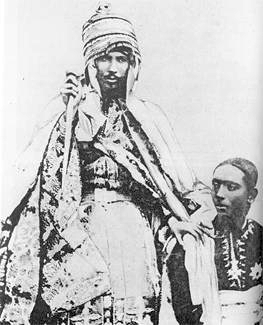



Emperor Tewodros II
His childhood name was Kassa Hailu, he came up during a period of Ethiopian history known as the "Age of Princes" where the power and prestige of the Emperor was eclipsed by the power and influence of various warlords and princes. Each tribe and region had someone they wanted in charge, so the Negus basically became a puppet for whoever had the best army and weapons in order to gain influence over rival kingdoms. Kassa Hailu began his career a "shifta" which is an Ethiopian term for "outlaw" in more contemporary terms it could range from thugs and bandits to rebels and revolutionaries, so these "shiftas" travelled and raided other kingdoms and tribes. Before long, this band of outlaws became an army and from there Kassa consolidated power and outgunned the warlords reigning in control from the rebellious kingdoms of the fractured Ethiopian Empire. In order to keep rebellious Shewans in line he took the prince of their kingdom Sahle Maryam prisoner. Sahle would grow up to become the future Menelik II.
And so Kassa Hailu was finally crowned Emperor Tewodros II and this marked a turning point between the end of the Age of Princes and the beginning of modern Ethiopia. Despite his crowning, many saw Tewodros as a royal surpur although he claimed nobility through his mother. The Emperor believed in advancement, he was much too busy quelling rebellions in the still fragile empire. After the death of his beloved wife he became increasingly brutal. After a British captain failed to secure him help against the Muslims threats to the north he took the Europeans in the kingdom who so happened to also be Brits. His army was soundly defeated, so the Emperor freed the hostages and sent them to the Brits, the Brits respond by saying they'll treat him and his fam with dignity. The Emperor angrily responded he would never surrender, so his fortress stronghold at Maqalla was shelled and using the pistol that brought him fame as a shifta committed suicide on Easter Monday. (Below are pics of him, his captives, and the tragically ironic Ras Alemayhu his son who ended up living in Europe after his father's death. The last pic is a European descendant of very royal blood that was a British actor.)

.jpg)


Emperor Tekle Giyorgis II of Wag
After the fall of Emperor Tewodros II, 3 powerful princes remained from the long time struggle that was the "Age of Princes". One was Kassi Mercha of Tigray, another was Sahle Maryam of Shewa, and the third was Wagshum Gobeze of Wag. Through his mother he had ties to the Solomonic dynasty, but more interestingly though through his father he had ties to the more mysterious medieval Zagwe dynasty and the rulers of Lasta. When the Jewish Queen Judith(or Gudit, which means trouble) destroyed the remnants of the Axumite Empire, the Solomonic dynasty was forced to the south, the upstart Zagwe dynasty then filled the void. Zagwe was a Ge'ez name for the Agaw tribe who are the indigenous inhabitants of the Ethiopian highlands. Agaws were also close with Beta Israel a.k.a. Ethiopian Jews whom were marginalized by the Axumites and later Solomonic lines. The Zagwe dynasty included King Lalibela who built the famous rock hewn churches in the town that bears his name. The nearly 400 year Zagwe reign ended with the return of a Solomonic descendant of Axum and his army. So this Zagwean comeback began with Wagshum's leading the rebellion of Lasta 6 years after the execution of his father by Tewodros II.
In the Emperors final months, Wagshum began marching his army to Tewodros' stronghold the fortress of Maqalla. After a brief detour to eliminate a rebellious rival, and with the Emperor now dead, Wagshum now proclaimed himself Emperor Tekle Giyorgis II at Soqota in his home of Wag. However with no bishop to crown him, his legitimacy was quickly questioned. To close that gap he showed favor to the church and reversed decisions made by Tewodros before him. After diplomatic olive branches to his rivals didn't work, he arranged to have his have brother marry the first cousin of King Menelik II. While Tekle Giyorgis himself was already married to the sister of his Tigrean rival Kassai Mercha. None of this worked, and while Mercha re-gained access to the sea and British support to train/arm his troops, Menelik built up slowly while he let his rivals destroy each other. When Mercha was able to get a bishop, Tekle Giyorgis decided to attack with no support and against his wife's advice. It was a rout, as he lead a charge he was wounded, blinded, and taken prisoner. Tekle Giyorgis, his brother, and mother were imprisoned in a monastery in Adwa. His wife went on to live comfortably in her brother's court.
Couldn't find pics. Musta been real in the field.

Emperor Yohannes(John) IV of Tigray (Pics:His son Ras Araya Selassie in the first pic, his nephew and heir Ras Mengesha in the last pic.)
A powerful warrior with a tremendous army that at it's height waged wars against Sudan and Egypt, he came from the Tigrayan line of the Solomonic dynasty. When the British came for Tewodros, Kassai Mercha with his powerful band of shiftas turned militia gave the Brits easy passage to the increasingly paranoid Emperor. Not only did he regain the coast from Ottoman control in what is now Eritrea, but he received a handsome reward of weapons and money while the Brits took out his obstacle Tewodros. The British looted artifacts, ancient texts, and Tewodros' belongings, some stayed behind to train Kassai's men. Kassai Mercha used some of the new funds and quickly sent for a new bishop in Alexandria and got one, and after imprisoning his rival/brother in law, he was crowned Emperor Yohannes IV at Axum. Yohannes' reign would be remembered for his many battles against outside forces.
When Egypt plotted to take control of the Nile basin(as usual
 ), Yohannes would have none of it. When Egypt invaded and took the city state of Harar both Yohannes and Menelik were infuriated. After no intervention from European "allies", Yohannes mobilized his army and beat the shyt out of the Egyptians in two major battles after which Menelik was forced to recognize game and accept Yohannes' legitimacy. Their children were married to strengthen ties between the two houses. When the Mahdists rose up against Egypt, Yohannes' agreed with the British to let the Egyptians retreat through his lands in exchange that his claims on Massawa in modern Eritrea would be recognized. Naturally the Europeans didn't give a shyt about his claims.
), Yohannes would have none of it. When Egypt invaded and took the city state of Harar both Yohannes and Menelik were infuriated. After no intervention from European "allies", Yohannes mobilized his army and beat the shyt out of the Egyptians in two major battles after which Menelik was forced to recognize game and accept Yohannes' legitimacy. Their children were married to strengthen ties between the two houses. When the Mahdists rose up against Egypt, Yohannes' agreed with the British to let the Egyptians retreat through his lands in exchange that his claims on Massawa in modern Eritrea would be recognized. Naturally the Europeans didn't give a shyt about his claims.Mahdist leader Muhammad Ahmad didn't like Yohannes' meddling and got to beefin, meanwhile Menelik and another king from Gojjam rebelled, and the Italians took the port of Massawa, all at the same damn time. His second in command crushed the first Mahdist attack and was in route to attack the Italians, meanwhile Yohannes' crushed the Gojjam rebellion but before getting to Menelik and Shewa, the Mahdists invaded Gondar and burned many of the old churches and so the Emperor went to confront them. As his army was soundly crushing the Mahdis, Yohannes was mortally wounded. Before death, he reveals that his nephew Ras Mengesha was actually his son and named him heir. Upon hearing the news of his death, his once proud army almost completely fell apart. His second in command and new heir salvaged what little they could of the army. As a loyal few were transferring his body back home they were ambushed by Mahdis, one of his most loyal soldiers fought to the death against them. Yohannes body was taken back to Sudan and beheaded, his head is believed to be in Khartoum somewhere. The confusion in succession split the Tigrayan branch, along with the loss of their ancestral land north of the Mareb river which was to become Eritrea, damaged the prestige of the once proud Tigray line and weakened Tigrayan influence overall for years.



Last edited:

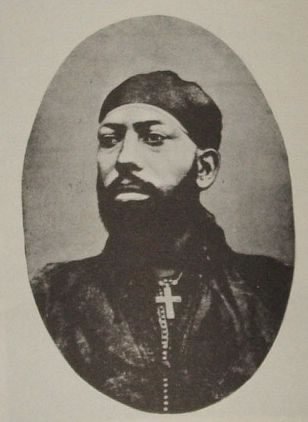




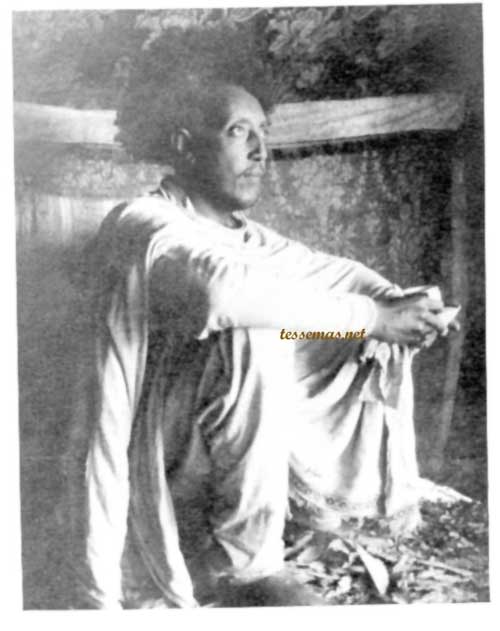















 when she told me.
when she told me.


